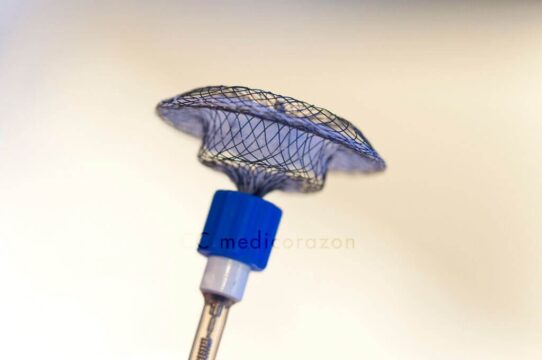Recently, at the TCT Congress results from the SWISS-APERO study comparing Watchman and Amulet devices were presented. Now, a new study, Amulet IDE—published in Circulation—, compared both devices on a large number of patients.

Amulet IDE was designed to evaluate the safety and efficacy of dual-seal mechanism device Amulet compared with the Watchman (a widely used tool in clinical practice).
In this sense, the Amulet device was non-inferior in terms of safety and efficacy to prevent stroke in patients with nonvalvular atrial fibrillation compared with the Watchman device. Atrial appendage occlusion was superior with Amulet—a result also observed in SWISS-APERO.
In this study, 1878 patients with nonvalvular atrial fibrillation and at high risk of stroke were randomized to receive either device. The primary safety endpoint was a composite of procedure-related complications, all-cause mortality, or major bleeding.
The efficacy endpoint was a composite of ischemic stroke or systemic embolism at 18 months. Atrial appendage seal at 45 days was also considered.
In terms of safety, Amulet proved to be non-inferior to Watchman (14.5% vs. 14.7%; p < 0.001).
Read also: TCT 2021 | SWISS-APERO: Difference in Leaks between the Amulet and the Watchman.
However, results were similar for major bleeding and death (10.6% vs. 10.0%, and 3.9% vs. 5.1%, respectively).
Procedure-related complications (pericardial effusion and device embolization) were higher with Amulet (4.5% vs. 2.5%).
Conclusion
The Amulet atrial appendage occluder device was non-inferior in terms of safety and efficacy for stroke prevention in patients with nonvalvular atrial fibrillation. Peri-procedural complications were higher with Amulet, but decreased with increased operator experience.
amulet-dieOriginal Title: Amplatzer Amulet Left Atrial Appendage Occluder Versus Watchman Device for Stroke Prophylaxis (Amulet IDE).
Reference: Dhanunjaya Lakkireddy et al. Circulation. 2021 Nov 9;144(19):1543-1552. doi: 10.1161/CIRCULATIONAHA.121.057063.
Subscribe to our weekly newsletter
Get the latest scientific articles on interventional cardiology





